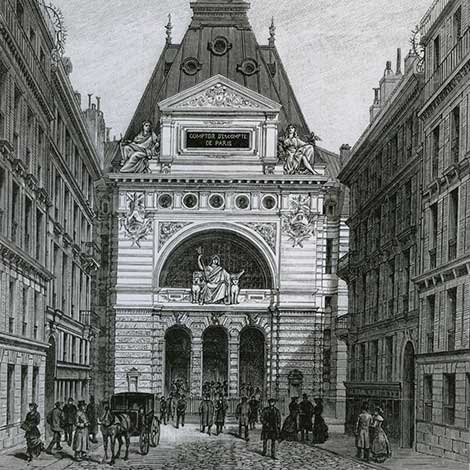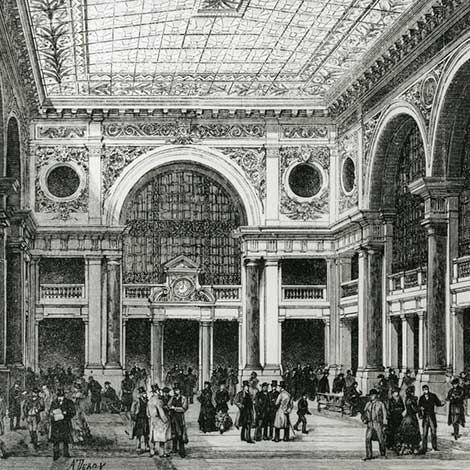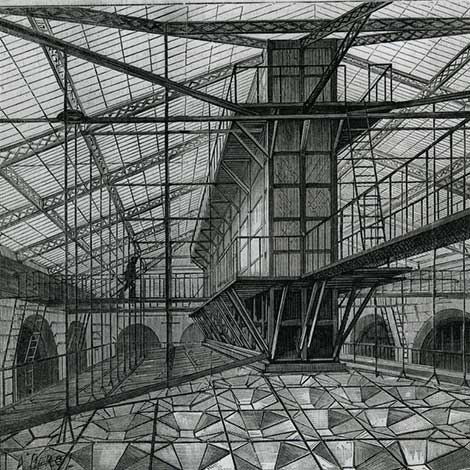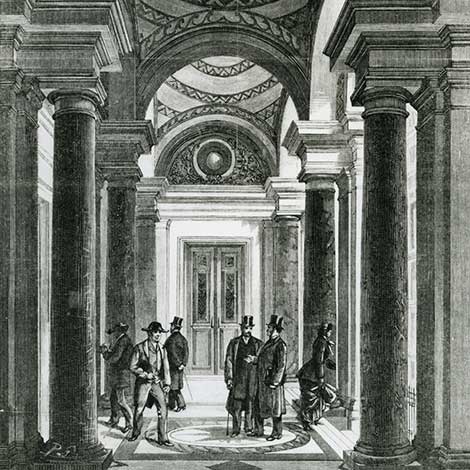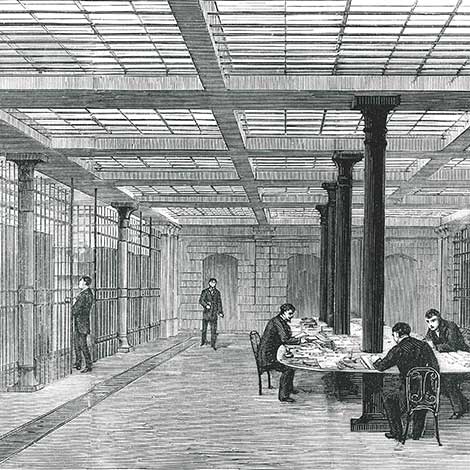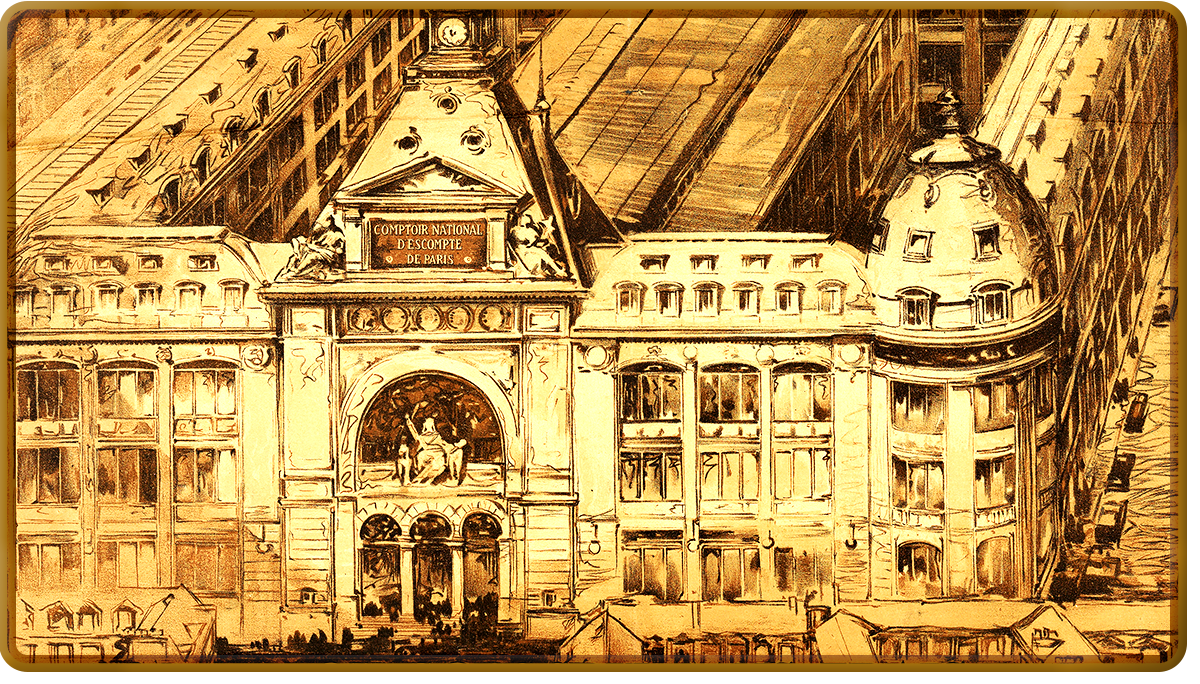The new Comptoir National d’Escompte de Paris (CNEP) head office through the lens of Durandelle
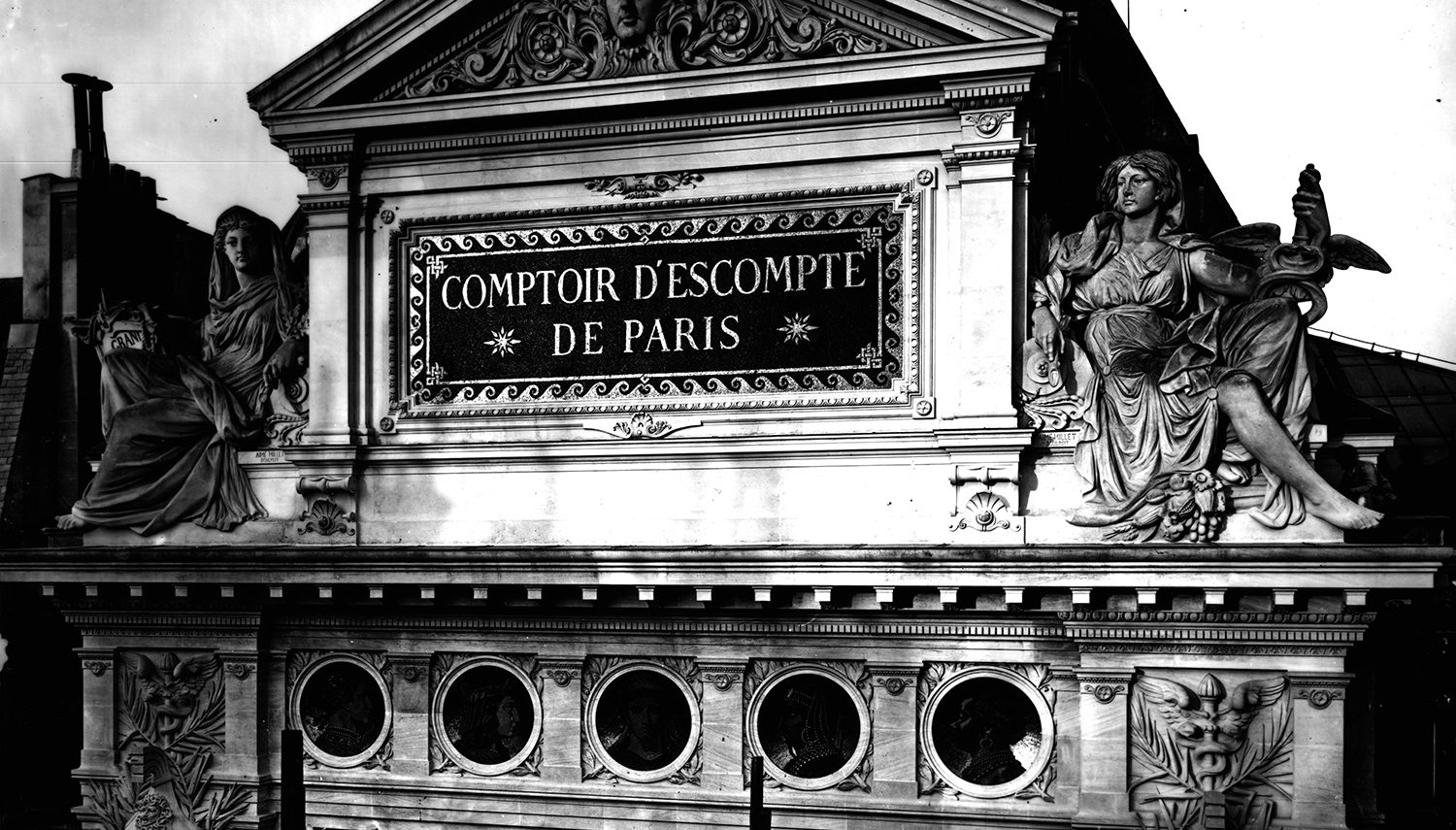
Taken in the mid 19th century, the photograph documented the urban transformation of Paris and other regional metropolises. Among the major constructions are financial establishments. The building at 14 rue Bergère, built to be the head office of CNEP, BNP Paribas forerunner, is one of the buildings immortalised by one of the most iconic figures in architecture photography, Louis-Emile Durandelle.
The rise of architecture photography in the second half of the 19th century
In 1839, François Arago, deputy and distinguished scientist, presented to the French Academy of Sciences then before the House of Representatives a revolutionary invention: the daguerreotype. While it was not the first photographic technique, this ground-breaking process by Louis Daguerre made it possible to display and preserve an image permanently.
During the industrial revolution, photography played a crucial role in sharing the technological breakthroughs and industrial production.
The images helped to “give the most accurate representation possible of a social, industrial and economic reality in full transformation and to provide the market with a picture technique that reflects these changes,” explains F. Denoyelle in on page 15 of his work Les studios d’art industriel. Take, for example, the factory pictured as a figure of modernity.
Over the course of the second half of the 19th century, an implicit agreement would be formed between photographers and architects.
Their relationship, which dates back before the birth of photography, was formed gradually and would lead to a distinct discipline: architectural photography.
For architects, the images provided a means of documenting history unfolding at the various stages of construction, thus helping them to promote their work. Architectural photography is most prominent in the restoration of historical monuments.
Eugène Viollet-le-Duc, renowned for his restorations of medieval constructions, had architects provide daguerreotypes of monuments in order to keep a precise record of that which time has destroyed.
As an extension of architectural reviews, newspapers such as Illustration developed an interest in architectural photography which, along with the creation of establishments, encouraged the production and sale of this type of image and thus popularised the discipline.
Engravings of the CNEP headquarters published in the newspaper “l’Illustration” of February 18, 1882, based on the photographs of Louis-Emile Durandelle:
Durandelle: a symbol of architectural photography
Louis-Emile Durandelle (1839-1917) is a prominent figure in French photography. From 1860 to 1890, he specialised in photographing architecture and artwork before eventually devoting himself to political and social activities.
In 1854, he partnered with Hyacinthe Delmaet to create a photography workshop. Very soon after its founding, the Delmaet and Durandelle name became synonymous with industrial and commercial artistic reproduction. The concept of requests becomes key to understanding the choice of Durandelle.
Indeed, some photographers responded to the growing demand of architects who appreciated the speed, efficacy and precision of photographs. Since the merger of architecture and photography, Durandelle supported the union of these two art forms and threw himself into architectural photography.

Through his photographs, Durandelle places himself as a direct witness to the various stages of Parisian constructions from the Second Empire and the Third Republic, at a time when the city’s landscape was transforming. Durandelle is behind an extensive photographic corpus offering a precious source of information.
He immortalised the stages of construction of a number of buildings, from their foundation to their completion. Many of his photographs are inscribed in the collective imagination of Paris’s urban history, although very few are aware of the man behind the camera. Some of Durandelle’s most exemplary campaigns include the construction of the Opéra Garnier, the Eiffel Tower, the Montmartre Sacré-Cœur Basilica and the head office of Comptoir National d’Escompte de Paris, forerunner of BNP Paribas.
Albert Chevojon, a colleague of Durandelle, would continue the tradition of industrial photography up until 1995. In 1886, he purchased the shares and photographic archives of the Delmaet and Durandelle studio, renaming the company Studio Chevojon.
Close-up on two photographs of CNEP taken by Durandelle
In 1882, the CNEP inaugurated its new head office after four years of renovation. It is one of the first modern headquarters of French banks, with that of the Crédit Lyonnais.
Since 1851, the Comptoir has been headquartered in the Hotel Rougemont located at 11 rue Bergère in Paris, not far from the stock exchange. With the growth in business activity and personnel, the bank entrusted the construction of the building to the French architect Edouard Corroyer. Fervent defender of the use of photography in the professional practice of architecture, this student of Eugène Viollet-le-Duc once again called on Durandelle’s services. “Durandelle is already widely known to architects for the beauty of the prints that come out of his workshop”, this is what Édouard Corroyer said, on 16 May 1880, in an article appeared in Le Panthéon de l’Industrie newspaper entitled “Photographie artistique et industrielle”, or “Artistic and industrial photography”.
In 2014, a remarkable photographic fund of Studio Chevojon enriched the historical collections of BNP Paribas. In this series of pictures covering the period from the 1880’s to the 1970’s, some precious shots are the work of Louis-Emile-Durandelle.
By the 19th century, the Comptoir national d’escompte de Paris had established itself on five continents. It is the first French bank to have an international network, opening its first branches in Kolkata (formerly Calcutta) and Shanghai in 1860. Placed above the striking entrance at 14 rue Bergère, five medallions represent CNEP’s support for the French traders in the operations abroad.
Facade
By the 19th century, the Comptoir national d’escompte de Paris had established itself on five continents. It is the first French bank to have an international network, opening its first branches in Kolkata (formerly Calcutta) and Shanghai in 1860. Placed above the striking entrance at 14 rue Bergère, five medallions represent CNEP’s support for the French traders in the operations abroad.
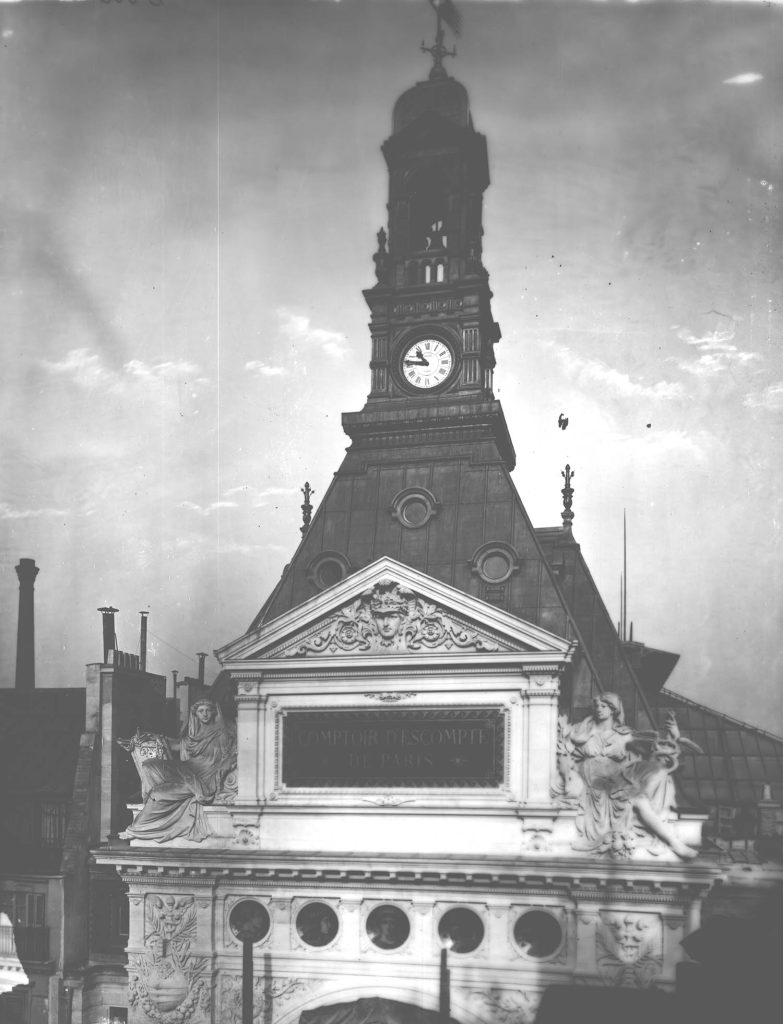
Atrium
The Atrium was designed to impress and reassure customers. Its vastness and rich décor lends this building a sort of palace quality. It measures 31 metres long, 16 wide and 17 metres high. The space is topped with an imposing polychrome solarium decorated with vegetal motifs, letting the daylight stream in. This hall served as the central branch from 1882 to the early 2000’s.

A model of modern banking architecture, the CNEP head office satisfied the requirements of the banking industry throughout the second half of the 19th century. The building embodies strength and emphasises the international dimension of CNEP. Today, BNP Paribas continues this tradition, currently operating in 80 countries. From 2007 to 2009, the Group launched renovations of the Bergère site in order to adapt it to the company’s current business and new standards, particularly with regard to the environment. It is the first restoration of a historical monument to obtain the HQE certification (Haute Qualité Environnementale, or “high environmental quality”).


